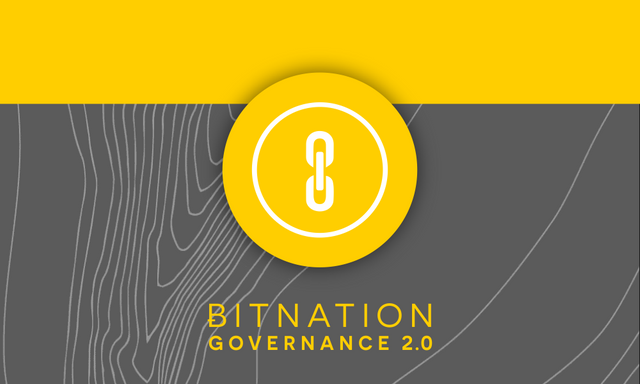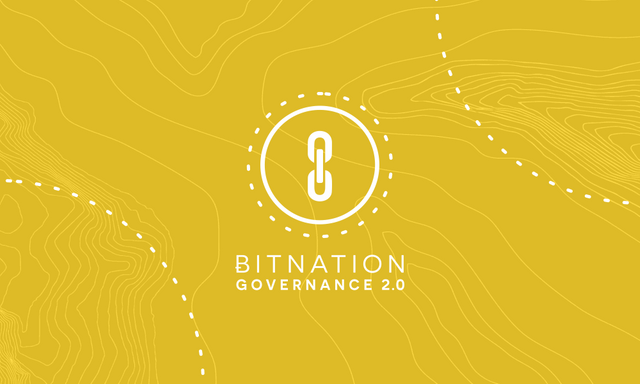Decentralization to the Rescue – Bitnation: PAT Reputation Sub-Tokens (4/4)

Reputation
From what I already said about the project, it’s plain obvious that effective reputation system is absolutely crucial for the platform. Truth be told, reputation systems are increasingly important for all information sources, communities – basically all imaginable entities. Information age is merciless. It floods you with so much information that there is absolutely no way how to pick the really relevant bits for absorption. Whichever system lacks effective reputation system is directly responsible for information overload of its users. It is also directly responsible for all the time wasted by manual recherché, where automation could have done the very same thig, just more effectively and quickly.
The biggest problem of reputation algorithms is the quantifiability of all the variables. We on Steem are direct witnesses of how wrong a reputation system can go. Luckily competing projects such as @steem-ua are trying to bring forth a better product than the current ruleset. It’s just start of the journey, but at least we’ve started. Now, how does a project that relies on an effective reputation system deal with its needs? Let’s take a look.
PAT
I already said that PAT is the system’s liquid token. It’s being distributed by Lucy the Exocortex and the distribution is currently done via Ethereum. In addition to that, PAT governs three non-transferable reputation tokens that I’m going to break down very soon. I feel the importance to say that due to the fact that the reputation is governed by the PAT token, it technically is transferable between different chains. Therefore when I said the platform is Blockchain agnostic, reputation of the users doesn’t have to start from the scratch if the community migration is initiated, provided the user can verify his identity. Thus said, the reputation sub-tokens are non-transferable between different users, not Blockchains.

POA (Proof-of-Agreement)
Proof-of-Agreement is the reputation sub-token that represents the ability of individual users to commit to agreements with other users and subsequently adhere to the signed rules. Whenever a contract is successfully completed, or if the consensus hasn’t been reached but the dispute was successfully resolved, both parties gain some POA. POA can only be gained by “user entities” on the platform.
POA is the score that ultimate determines how much PAT will be distributed to the user via Lucy. It can be therefore said that PAT is the reputation sub-token with the biggest monetary value on the platform.
POC (Proof-of-Collective)
POC is then attributed to the governance models. There is no direct monetary incentive for acquiring POC. It basically represents the rank the individual governance models stand at. Thus said, instead of monetary incentive for the governance models there is the “attraction incentive”. The bigger POC the higher chance that new citizens will be attracted. It definitely will at least boost the traction of individual governance models compared to the lower ranked ones.
POC is distributed via users’ votes. The strength of the vote is directly correlated to the users’ POA. Another important aspect of POC is that it can only be distributed by the actual citizens of any given governance models. This rules should significantly decrease an effort of one governance model that would try to diminish the POC of a competing governance models.
PON (Proof-of-Nomic)
PON is the last reputation sub-token and represents the reputation score of rules – be it rules, rules about changing rules, or smart contracts. As “nomic” represents the ability to change and adapt, both upvotes and downvotes are crucial for PON. As with the POC, PON is supposed to create a ladderboard for rules. Citizens can then have easier time choosing which rules they want to adhere, or which smart contracts worked to the best interest of both engaged parties.
Now if the rule has been downvoted, it creates direct incentive for its creator to repair its flaws. If he doesn’t manage to do so in a certain period of time, the rule loses its PON. The important thing is that it doesn’t lose its rating immediately, instead the downvote works as a feedback, and then if the feedback is not heard, the reputation is taken away. If the user does not follow feedback often, he can even lose his POA.
There are several factors that are taken into account when deciding the strength of vote of individual users regarding the rules. Now not only engaged parties can rate rules. When one is engaged with the actual rule, his vote is greatly boosted though. Otherwise it’s the users POA that determines how strong the individual’s vote is.
Algorithm background
A background for creation of this reputation algorithm is described in a document called An evolutionary Nomic structure for digital rule making in Bitnation. The document described 4 points that are basically the very core of any effective reputation system. Let me just quote them. You will see that vast majority of what is explained there has been already covered by my series.
- Every smart contract should have a rating, a set of metrics which are community determined to represent (fitness). This would function as the community standard for quality control.
- Every participant should have a reputation score whether the participant is an organization, a human, AI, or something in between.
- Every participant should have followable lists (this enables stigmergy by producing trails). If Bob follows the list of Edmond then Edmond follows the list of Alice, etc.
- Every participant should be able to rate every component, follow any other participant, follow smart contracts, rate smart contracts, continuously, and in real time [2]
Table of content
Why opt-in governance is a necessity and what Bitnation brings to the table
PAT reputation sub-tokens
Sources
An evolutionary Nomic structure for digital rule making in Bitnation
Additional sources
Twitter: https://twitter.com/@MyBitnation
Facebook: https://www.facebook.com/MyBitnation
Steemit: https://steemit.com/@bitnation
Telegram: https://t.me/PangeaBitnation
Project Website: https://tse.bitnation.co/
BitNation Blog: https://blog.bitnation.co/
**DISCLAIMER**
The information contained within this post shall not be taken as a financial advice. I am not a financial advisor and none of your investment decisions should be carried out based on any information presented here. You can lose all of your money by investing. The information presented in this article is for educational and entertainment purposes only.

Hi @fingersik!
Your post was upvoted by @steem-ua, new Steem dApp, using UserAuthority for algorithmic post curation!
Your UA account score is currently 4.765 which ranks you at #1409 across all Steem accounts.
Your rank has dropped 5 places in the last three days (old rank 1404).
In our last Algorithmic Curation Round, consisting of 249 contributions, your post is ranked at #211.
Evaluation of your UA score:
Feel free to join our @steem-ua Discord server